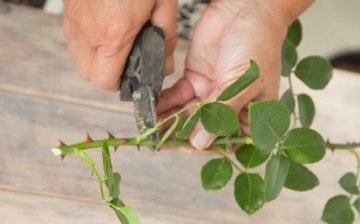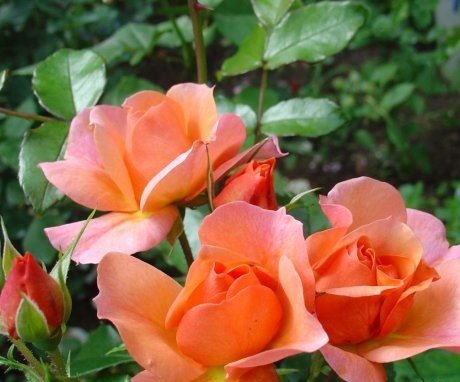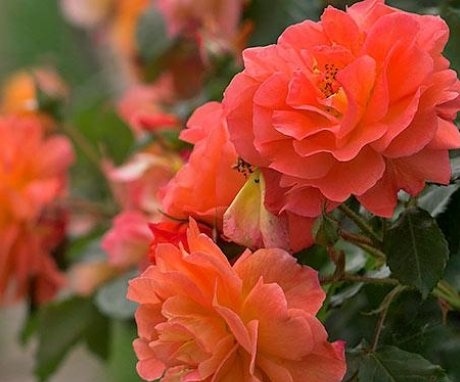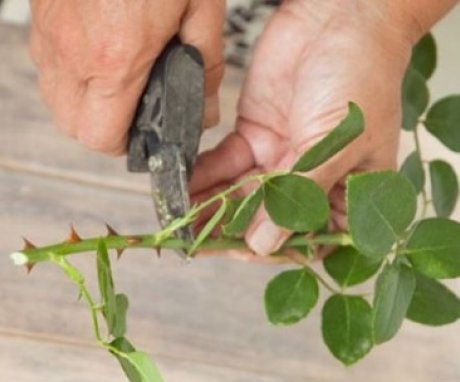What is a polyanthus rose - description, popular varieties and cultivation
Gardeners usually grow such roseslike floribunda and hybrid tea species, unaware of the existence of an amazing frost-hardy species. Polyanthus rose will serve as a decoration for any garden area. With the help of this flower, you can create interesting flower beds or borders.
Content:
- Features of the structure of polyanthus roses
- Popular varieties for cultivation
- Reproduction methods
- Care: pruning, feeding and watering
Features of the structure of polyanthus roses
Polyanthus roses appeared in the 19th century thanks to the French breeder and owner of the rose nursery, Jean Baptiste Guillot. He crossed a Japanese dwarf multiflorous rose and a Chinese tea rose. The resulting flower is characterized by good resistance to excess moisture, frost and fungal diseases, grows well in the open field.
The polyanthus rose received from its predecessors beautiful numerous flowers, collected in inflorescences, and dense green foliage.
This rose hybrid has almost no thorns and rarely remains without flowering... The number of flowers in an inflorescence can reach fifty. The flowers themselves are small from 4 to 7 centimeters in diameter. The bushes reach an average height of 50 centimeters.
The flowering period of polyanthus roses is from mid-June to late autumn. Due to their resistance to frost, these plants can be grown even in regions with harsh climates.
Popular varieties for cultivation
The best varieties:
- Border King is well suited for border decoration. The bushes reach a height of 70 cm, semi-double red flowers are collected in inflorescences of 45 pieces.
- The Ze Feri variety has pink flowers, 52 buds in inflorescences, spreading bushes reach a height of half a meter. Rose Ze Feri blooms until late autumn. The variety is winter-hardy, suitable for growing as part of slides and group plantings.
- Orange Triumph is a very frost-resistant variety that blooms until the very cold. Bushes about half a meter high. The flowers are red. Looks good in floral arrangements flower bed and borders.
- Flowers of the Holstein variety are colored dark crimson and exude a light aroma (which is rare for polyanthus roses), relatively large for polyanthus roses - 10 cm in diameter. The bushes are quite tall: up to 80 cm tall. The leaves are large, dark, and have a slightly orange tint.
- The Dagmar Shpet variety has beautiful double flowers with pinkish edges of the petals. The bushes are compact, growing up to 70 cm in height.
These are just a few of the polyanthus rose varieties available. Plants of various varieties differ mainly in the color and size of flowers, their number in the inflorescence, and the height of the bush. Almost all varieties of polyanthus rose are frost-resistant, hardy and characterized by high survival rate. cuttings.
Reproduction methods
Polyanthus roses reproduce in almost every possible way:
- Seeds
- Layers
- Cuttings
- Vaccination
- By dividing the bush
Most often, gardeners use seed or cuttings propagation. Polyanthus rose refers to the small number of types of roses that can be propagated with the help of seed... The seeds can be purchased at the store or collected by yourself.In the latter case, select the unripe fruit, cut the skin and remove the seeds.
Seeds of a polyanthus rose are sown in February, the bushes will have enough time to grow stronger before planting in open ground.
Before sowing seeds, they must be subjected to the procedure stratification:
- Spread the seeds on gauze soaked in hydrogen peroxide.
- Cover with the same treated piece of gauze.
- Place cheesecloth with seeds in a plastic bag and place in the vegetable compartment of the refrigerator. Be sure to date the package.
- Check the bags periodically: if mold appears, you need to replace the seeds.
The sprouts should appear in 2 months. Sprouted seeds are immediately planted in small containers. It is important to monitor soil moisture and good lighting. Polyanthus roses reproduce very well cuttings, although, according to the breeders, in this case they tolerate the cold worse, and they need to be well wrapped for the winter.
When grafting:
Cut the lignified shoots at the end of June.
- Divide them into parts so that each has 1-2 buds.
- Pour soil into the container, placing a mixture of peat with sand on the top layer.
- The cuttings can be pre-soaked in the root.
- Water the prepared soil and place the cuttings in it with a slope of 45 degrees.
- The container with cuttings should be covered with glass and placed in a warm room, in a place protected from direct sunlight.
- After rooting the cuttings, transfer the container to a cool place (+2 degrees).
- In the spring, the plants will be ready for planting on the site.
Care: pruning, feeding and watering
Polyanthus roses are quite unpretentious in their family. The rules for planting them are practically no different from planting other species. The main requirement is good illumination.
Despite the resistance of polyanthus roses to excessive moisture, you should not plant them in lowlands. It is better to choose an elevated and protected from northern winds area with black earth or light loamy soils rich in humus. It is highly discouraged to plant roses on sandy soils.
Plant care consists in regular watering, mulching and loosening the soil, pruning bushes and feeding fertilizers.
The initial pruning of a polyanthus rose is carried out when it is planted in the ground: it is recommended to shorten all shoots by a third. In autumn, at the end of the period flowering all shoots also need to be pruned, leaving seven buds on each.
Pruning bushes is an obligatory and important part of care, it allows you to:
- Get rid of weak and sick shoots.
- Stimulate the growth of young shoots.
- Increases plant resistance diseases and pests.
It is also important to remove faded flowers, for the formation of fruits they consume the lion's share of nutrients. After their removal, the growth of the plant is enhanced.
Top dressing can be carried out already in spring, using complex mineral fertilizers or weak solution chicken droppings... The solution is prepared as follows:
For 20 parts of water, take 1 part of the droppings and incubate for a week.
- The resulting infusion is again diluted with water in a ratio of 1: 3.
- The solution can be started to water in the spring.
- From the moment the buds are formed, they are watered once every seven days.
More information can be found in the video.
















